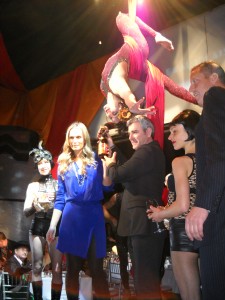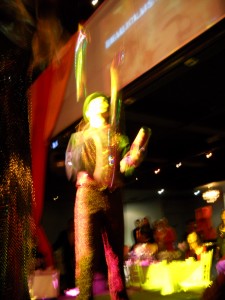We have had a busy, but productive, fall season thus far. Our wine salon, From Mystery to Mastery, conducted as part of the East End’s first HARVEST Wine Auction & Celebration was met with great success as was Tracy’s Sex, Wine & Chocolate event with certified sexuality educator, Amy Levine, held at the beautiful Coco de Mer erotica and lingerie store.
Tracy will be teaching at the International Wine Center later this month and at NYU for three classes in November. Her session on Italian Sparkling wines, to be presented at the American Wine Society’s (AWS) annual conference is sold out with 90 registrants and only a few seats remain for her session on South African Wines.
In honor of the AWS’ conference location in Cincinnati, OH – what we’ve dubbed, “the other Cin city” and birthplace of America’s first sparkling wine – we bring you the history of Nicholas Longworth this month.
Drink wisely and well,
Tracy Ellen Kamens, Ed.D., DWS, CWE
CEO: Chief Education Officer
and
Jared Michael Skolnick
COO: Cork Opening Officer
Bubbles Born in the USA: America Sparkles
America has long had a love affair with sparkling wine, yet, while many Americans would be quick to identify Dom Perignon as an iconic figure of the Champagne region, few would know that they owe a debt of sparkling gratitude to Nicholas Longworth who created the first American sparkling wine – a Sparkling Catawba, in 1842.
Born in Newark, New Jersey, in 1783, this “crazy Jerseyman” stood somewhere between 5′-1″ and 5′-3″ and arrived in Cincinnati in 1804 (one year after Ohio had attained statehood), at the age of 21. After studying law for six months (there were apparently a lot fewer laws back then), he established a law practice.
Concurrent with his legal work, Longworth made shrewd investments in land, beginning in 1820. These real estate investments permitted Longworth to indulge in a new passion for horticulture and viticulture, pursuing the latter as a hobby as he began to plant vines along the Ohio River.
His first attempts were with vitis vinifera, which, having been planted prior to the discovery of phylloxera, not surprisingly died shortly thereafter. Longworth then tried his hand at the American species, vitis labrusca. Specifically, he became interested in the Catawba grape (native to North Carolina), which was hearty enough to withstand the harsh winters of Ohio, planting these vines in 1825. He produced his first wine three years later, declared himself satisfied and subsequently quit his law practice, eventually crafting a sparkling version of his beloved Catawba.
But fortunately, Nicholas wasn’t the only one who admired his slightly sweet, sparkling wines. His wine was enjoyed not only throughout the United States, but also abroad in England and France. It was further lauded by poet Henry Wadsworth Longfellow who immortalized Longworth’s wine in his, “Ode to Catawba” published during the 1850s.
Longworth’s success eventually established him as the “wealthiest man in Ohio.” In fact, “…in 1850 his taxes rated higher than any other man in the United States except William B. Astor…” at an annual bill of $17,000 and, at his death, his wealth was estimated to be $15 million. (Harper’s Weekly)
In addition to being an accomplished wine producer, Longworth was a generous person and used his wealth to help others in his community. He provided work for those in need; built housing above his wine cellars for indigent laborers; and distributed bread to the hungry from his home every Monday morning.
Longworth’s efforts also helped to cement Ohio as a key winegrowing area in the United States. By 1860, Longworth had 3,000 acres of vines and was producing 570,000 gallons of wine, annually bottling 150,000 bottles. During this period, Ohio led the nation in the production of wine, supplying one-third of the nation’s wine and out-producing California by two to one. However, this boom was short-lived as Ohio wine production declined in both the wake of viticultural disease and a loss of labor as Ohioans left to fight in the Civil War.
Yet Ohio was not alone in its pursuit of bubbles. In 1855, Benjamin Davis Wilson, who was to become the first mayor of Los Angeles, was the first to produce a sparkling wine in California. And, across the country, a “champagne” industry was started in Hammondsport in New York’s Finger Lakes region in 1860. Crafting sparklers from Delaware, Iona, Elvira and Catawba grapes, the Pleasant Valley and Taylor Wine Companies set about to establish “American champagne [as] the leading wine of the region.” (Reichl, 14)
While most of this early success with sparkling wine was brought to an end in the 1920s as America pursued Prohibition, by 1933, “[t]he few surviving Eastern wineries, principally sparkling-wine producers of New York State [namely Great Western and Gold Seal], soon found their bearings again.” (Wagner, 61)
And, only a few decades later, a renaissance would take place, with Jack and Jamie Davies re-establishing a winery at the old Schramsburg estate in Napa Valley, CA. With a focus on quality, not quantity, the Davies’ produced a Blanc de Blancs, which they released in 1967, becoming “America’s first commercially produced Chardonnay-based brut sparkling wine.” (Sawyer) Schramsburg’s reputation was assured when, in 1972, their sparkling wine was poured at the “Toast to Peace” dinner with President Nixon and Premier Chou En-lai in Bejing, China. Their wines have been poured in the White House ever since.
Today, sparkling wine is produced in all fifty states, and, while many of these producers are local in scope, leading American sparklers are found in California, Oregon, New York, Virginia, New Mexico, Pennsylvania, Delaware and Massachusetts, and are often national and even international in their reach. Here, many serious winemakers are crafting world-class wines utilizing the Traditional Method of production, with ultra-premium producers focused on estate-grown grapes and the production of vintage-dated wines.
Harper’s Weekly Journal of Civilization, Nicholas Longworth Obituary, published 3/7/1863.
Reichel, Ruth ed., History in a Glass: Sixty Years of Wine Writing from Gourmet. Random House: New York, 2006 [Frank Schoonmaker, Return to the Native, p. 14]
Sawyer, Christopher. “The Best of Both Worlds.” The tasting panel, December 2009.
Wagner, Philip M. Grapes Into Wine, Knopf Press, 1976
Producer Profiles
Biltmore Estate
Biltmore Estate in Asheville, North Carolina is “the most visited winery in the United States,” seeing one million visitors annually. The 125,000 acre estate is the site of George Vanderbilt (grandson of Cornelius)’s dream home designed by noted architect Richard Morris Hunt. The Château Reserve Blanc de Blancs is 100% Chardonnay from fruit sourced throughout North Carolina and is aged 24-30 months before disgorging.
Chateau Frank
In 1962, Dr. Konstantin Frank established Vinifera Wine Cellars in Hammondsport, New York and earned a reputation for his Rieslings and “champagnes.” The 1999 Prestige Cuvee is made with 100% estate-grown fruit, a blend of 50% Chardonnay, 45% Pinot Noir and 5% Pinot Meunier and then aged for more than five years.
Gruet Winery
The Gruet family of Champagne, France established their Albuquerque, NM winery in 1984. The 2004 Blanc de Blancs remained en tirage for a minimum of four years with the last bottles reaching anywhere up to five years.
Iron Horse Vineyards
When Iron Horse’s founding partners, Audrey and Barry Sterling, first saw the 300 acre property in 1976, it was the most westerly vineyard in Sonoma, but the Sterlings knew they wanted to grow Chardonnay and Pinot Noir and that this was the perfect climate in which to do so. The 2005 Classic Vintage Brut is among the most traditional of their sparklers, made from 25% Chardonnay and 75% Pinot Noir and aged for three years.
Kluge Estate
Kluge Estate was established in 1999 in Carter’s Mountain on the edge of Blue Ridge Mountains in Charlottesville, VA by Patricia Kluge whose dream was to build a wine region. The 2007 SP Rosé, made from 95% Chardonnay and 5% Pinot Noir, was aged for 21-24 months and won at the Monticello Cup in 2010 and took home Silver medals at both the San Diego Wine & Spirits National Women’s Wine Competitions.
L. Mawby
Larry Mawby planted vines on Michigan’s Leelanau Peninsula in 1973, with his first harvest in 1978. His Talismon is made from estate grown fruit picked as a field blend of Vignoles, Pinot Noir, Pinot Gris, and Chardonnay.
Soter Vineyards
Although he is more known for his Pinot Noirs, Tony Soter chose to make a sparkler because he is a “sucker for a winegrowing challenge.” Produced from 100% estate grown fruit, the Soter Rosé is a 50-50% blend of Chardonnay and Pinot Noir and spent at least three years on the lees.
Troutman Vineyards
Building on Ohio’s wine legacy, Deanna and Andy Troutman established Troutman Vineyards in 1997. Their Cuveé D, a brut style sparkler made from hybrid variety, Vidal Blanc, won a Bronze Medal at the 2009 Ohio Wine Competition in the Hybrid Sparkling Wine category.



